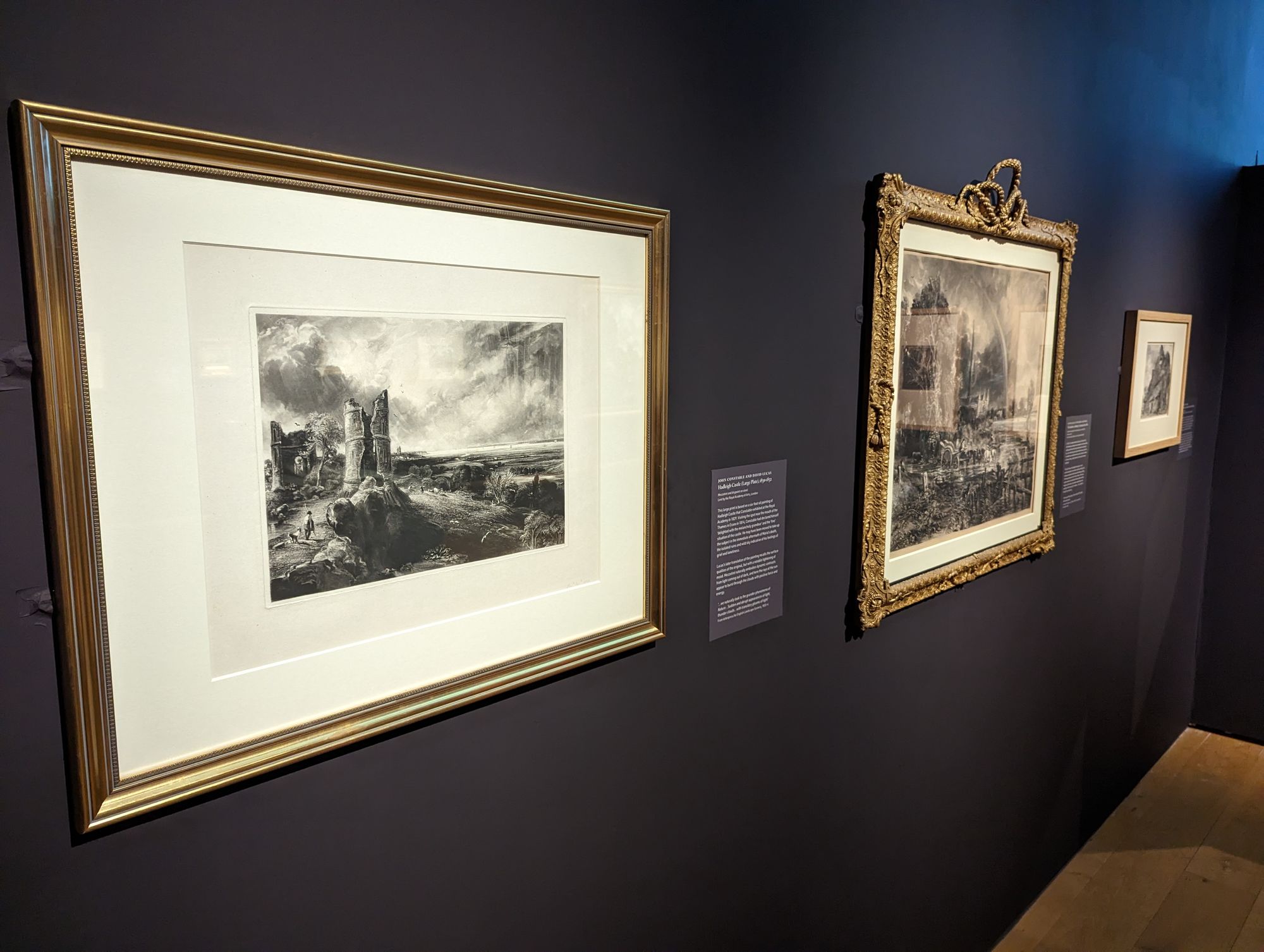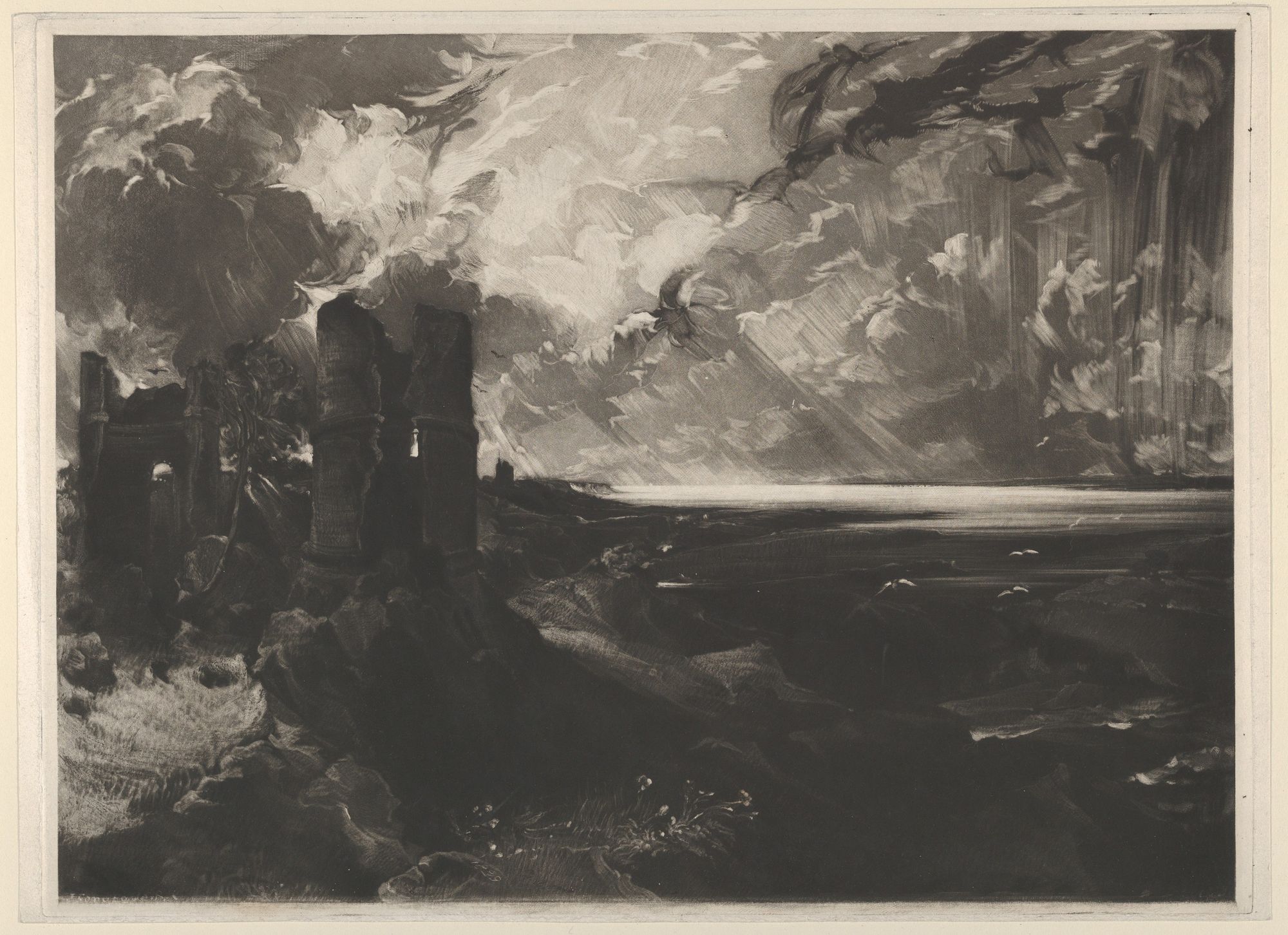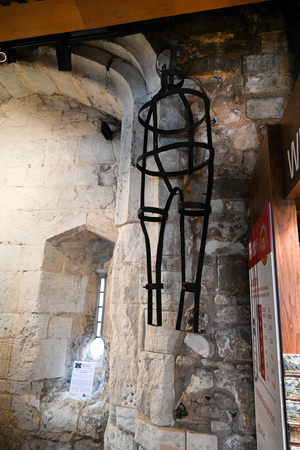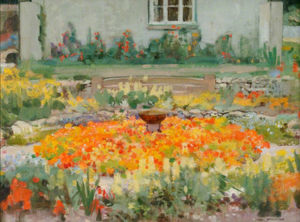A dramatic mezzotint print of Hadleigh Castle is one of a selection of impactful prints forming an important cornerstone of the Constable: The Dark Side exhibition. These works involved hours, days and weeks of laborious processes, as printmaker David Lucas translated Constable’s works onto steel plates. But before the rocking of preparation and scraping of detailing could start, came the choice of subject matter; Hadleigh Castle was of pivotal importance to Constable’s career and life. In this article we look at why.
From the exhibition curator, Nicola Moorby:
This large print is based upon a six-foot oil painting of Hadleigh Castle, which Constable exhibited at the Royal Academy in 1829. Visiting the spot near the mouth of the Thames in Essex in 1814 Constable had declared himself ‘delighted with the melancholy grandeur’ and the ‘fine’ situation of the castle. He may have been moved to take up the subject in the immediate aftermath of Maria’s death, the isolated ruins and wild sky indicative of his feelings of grief and loneliness.
Lucas’s later translation of the painting recalls the surface qualities of the original but with a notable lightening of mood. Mezzotint naturally embodies dynamic contrasts from light coming out of dark, and here the rays of the sun appear to burst through the clouds with positive force and energy.
‘...we naturally look to the grander phenomena of Nature…. Sudden and abrupt appearances of light, thunder clouds… with transitory gleams of light’
John Constable. From letterpress for English Landscape Scenery, 1833-4

After the death of Maria Constable in 1829, Constable returned far more frequently to ruinous imagery. For Constable, the image of a ruin became synonymous with his own fate, referring to himself as a ‘ruined man’. However, alongside the pain of loss came the elation of achievement as Constable became a Royal Academician in the same year. Yet even this was tempered by how ‘grievously nervous’ Constable was to debut these works. 19th century Royal Academy submissions were still along a much-maligned genre of painting. As Constable quipped, academy members preferred ‘the shaggy posteriors of a Satyr to the moral feeling of landscape’. Landscape works that did not utilise classical figures, themes or allegories were often considered devoid of artistic and poetic value.
Although Constable’s use of white highlights on Hadleigh Castle (original oil) was unpopular, critics praised the piece as ‘Full of power, and truth and freshness’ a description that contrasts earlier classifications of Constable’s works as simply objective portraiture of English landscape. The work and its many variations are significant as both triumphant and tragic. Choosing subjects of both a personal and historical significance, Constable sought to promote the appreciation of England’s scenery and, more importantly, to highlight nature’s guiding principle of chiaroscuro, showing the influence of light and shadow upon landscape. The translation of his oils into mezzotints meant the creation of a new visual language, encapsulating and enhancing the values and qualities of chiaroscuro that Constable so passionately believed in.

From the exhibition lender, Royal Academy of Art, London:
Although David Lucas's mezzotint was evidently well underway by the end of February 1830, it was laid aside, perhaps when it was decided to re-engrave the same subject on a smaller plate for publication in English Landscape Scenery (5th number, June 1832). Lucas's large 'Hadleigh Castle' remained unpublished until the print publisher Henry Graves & Co. declared a small edition to the Printsellers' Association in 1849. This impression, which entered the RA Collection in January 1840, is an unpublished progress proof.
Visit the exhibition and see Hadleigh Castle and many other mezzotints, drawings and oils by this historically significant artist up close.



